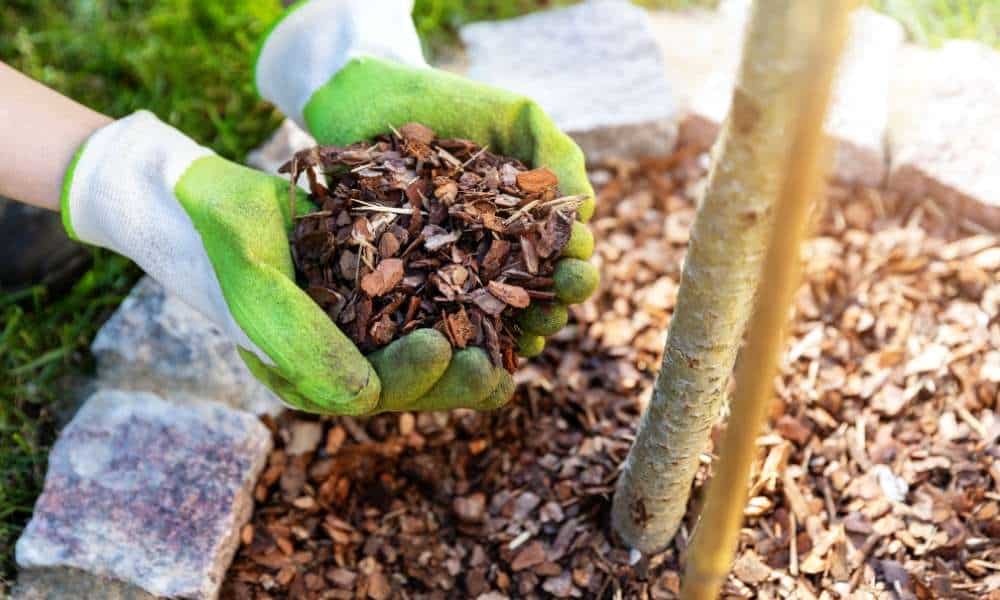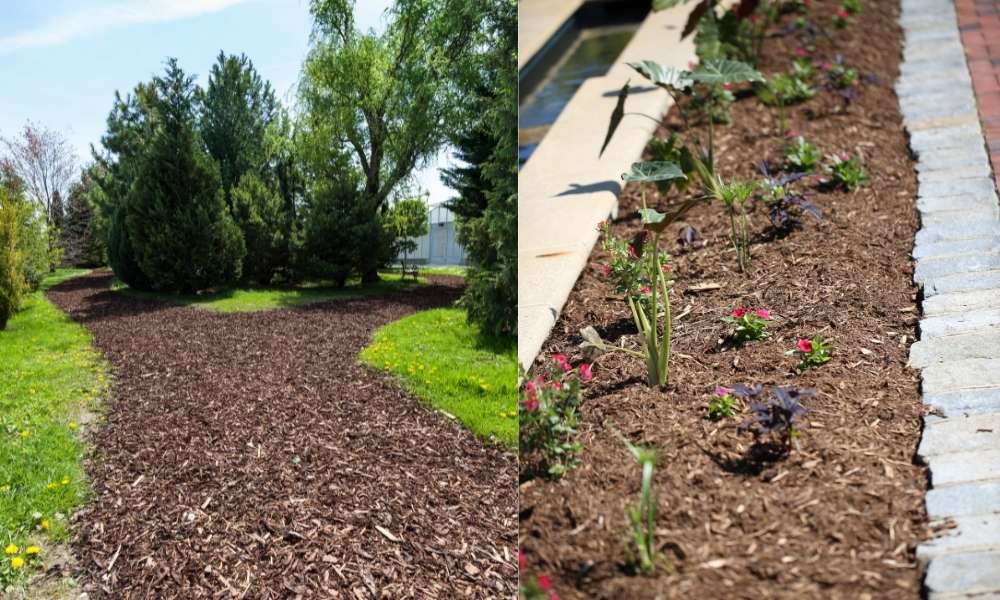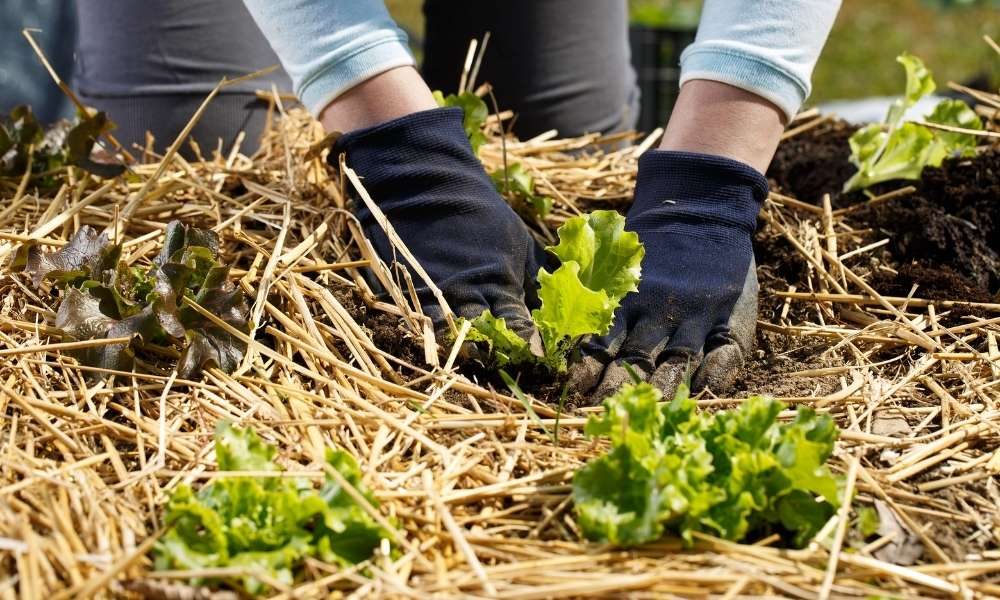Mulching flower beds is a great way to keep the soil healthy and reduce weed growth. There are many different types of mulches available, so find one that will work best for your garden. Some popular options are hay, leaves, straw, or bark. There are some easy steps for how to mulch flower beds.
Why Use Mulch?

Mulching is one of the best things you can do for your garden, and it’s easy, too! Mulch helps to keep the soil cool and moist, prevents weeds from growing, and makes your garden look tidy. In addition, mulching can help improve the fertility of your soil.
When it comes to mulching flower beds, there are a few things to keep in mind. The first is to use good quality mulch. You don’t want to use anything that will decompose quickly, such as leaves or grass clippings. Instead, use something like bark chips or gravel.
The second thing to keep in mind is the depth of the mulch. You want to make sure that the mulch is at least 3 inches deep, and preferably more.
Types Of Mulch For Flower Beds

Mulching flower beds is an important part of gardening. Not only does it protect plants from the elements, but it can also improve the appearance of your flower bed and help the soil retain moisture. There are several types of mulch you can use in your flower bed, but not all of them are suitable for every situation. Here are a few of the most common types of mulch and when they should be used:
Organic mulches, such as bark chips or shredded leaves, are good for keeping the soil cool and moist. They also add organic matter to the soil, which helps improve its quality. Inorganic mulches, such as stones or plastic sheeting, don’t break down as organic mulches do, so they’re a good choice for areas where you don’t want plants to grow.
How To Make Leaf Mold

Leaf mold is a great way to improve soil texture and fertility. It can be made from either leaves or grass clippings. The clippings should be chopped into small pieces and then allowed to decompose for several months. The resulting compost can be used to improve the fertility of flower beds, vegetable gardens, and lawns.
What Kind Of Soils Benefit From Mulch?

One of the benefits of mulch is that it can help to improve the soil. When you are looking to add mulch to your flower beds, it is important to select the right kind of soil. If you have sandy soil, for example, adding a layer of organic mulch can help to improve its water retention and fertility. In general, soils that are heavy and wet will benefit from the addition of organic mulch, while soils that are light and dry will benefit from inorganic mulch.
Flower Bed Mulching Do’s And Don’ts

Mulching your flower beds is a great way to add nutrients to the soil, suppress weed growth, and improve the overall appearance of your landscape. But there are some things you should keep in mind when mulching your flower beds.
When mulching your flower bed, be sure to use a material that will break down over time and add nutrients to the soil. Straw, hay, or leaves are all good options. Avoid using materials like wood chips or gravel, which will not break down and can actually harm the plants.
When mulching your flower bed, be sure to leave a few inches of space between the mulch and the stems of the plants. This will help prevent moisture from building up around the plants’ roots and causing them to rot.
And finally, be sure to mulch your flower bed regularly throughout the year.
Organic Vs Inorganic Mulch

Mulching is an important part of keeping your flower beds healthy and looking great. Mulch can be organic or inorganic. Organic mulches include materials like leaves, straw, and bark mulch. Inorganic mulches include materials like rocks and plastic sheeting.
Organic mulches break down over time, adding organic matter to the soil. This helps improve the soil’s structure and fertility. Inorganic mulches do not break down, so they need to be replaced every few years.
Which type of mulch you choose depends on your preferences and what’s available in your area. Organic mulches are generally cheaper than inorganic mulches. However, inorganic mulches can last longer and don’t need to be replaced as often.
About Dyed Mulch

Mulching flower beds is a great way to protect plants from the cold weather and keep the soil moist. Mulch can also improve the overall appearance of your flower bed. When choosing mulch, it is important to consider the color. Dyed mulch is an excellent option for those looking for a specific color scheme. There are many different colors available, so you can find the perfect match for your flower bed.
To apply dyed mulch, start by spreading it around the plants in your flower bed. Be sure to cover the entire area, but avoid piling it up against the plants themselves. You may need to use a rake or shovel to get it into place. Once the mulch is in place, water it well and enjoy your beautiful new flower bed!
Determine How Much Mulch Your Garden Needs

Mulching is an important part of gardening, and it’s necessary to do some research before you mulch your flower beds. The amount of mulch you need depends on the type of mulch you use, the climate, and the size of your flower bed.
In general, you’ll want to use about 2-4 inches of mulch in your flower bed. If you’re using a heavy material like bark chips, you’ll need more than if you’re using a light material like straw. Make sure to avoid putting too much mulch on top of your plants, as this can suffocate them.
If you live in a hot climate, you may need to water your mulched flower bed regularly to keep the soil moist.
Final Thoughts
Mulching flower beds is an easy way to keep your plants healthy and looking great. Not only does mulching help retain moisture in the soil, but it can also help prevent weeds from growing. By following these simple steps, you can create a beautiful and healthy flower bed that will last for years.




